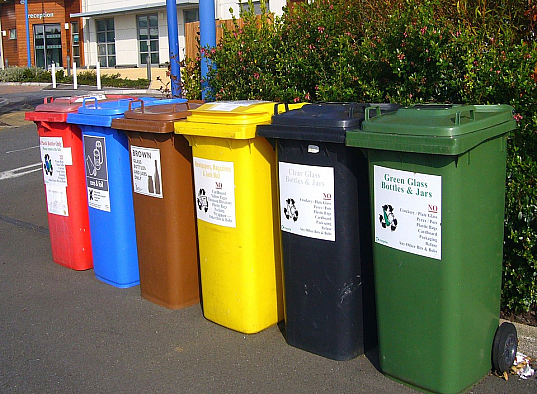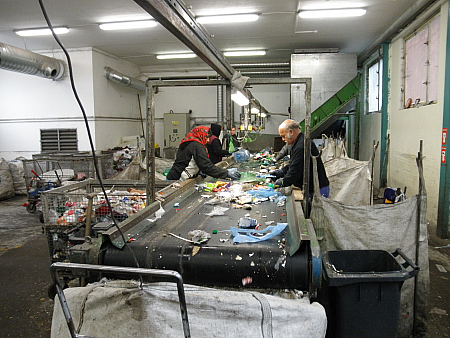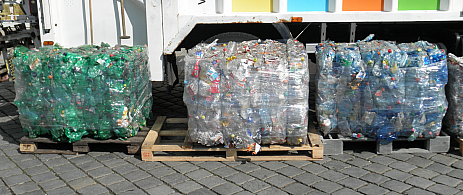January 21, 2020
This guest blog was written by Larry Jergins.

Recycling plays a tremendous role in helping consumers feel better about the waste we produce. But what exactly happens to the items in your bin once they leave the curb? Recycling programs vary from city to city and state to state. Understanding the process can help you keep the system running smoothly.
1. Collection
There are four main methods of collection. The most popular is curbside collection. Some communities offer drop-off centers, buy-back centers, and programs for deposit/refund on bottles and cans.
We'll focus on curbside collection, which is usually limited to paper, cardboard, glass, cans, plastic, and yard waste. A truck comes and dumps the contents of your bin into its reservoir before heading to a materials-recovery facility.
2. Sorting
The material must be sorted. This typically involves truckloads of waste emptying onto large conveyor belts where men and women sort and grade by hand. This is a detailed process whereby things like paper are organized by type. The crew must separate brightly colored paper, newsprint, plastic, and other contaminants. Sorting removes anything that can damage manufacturing equipment and ensures the quality of the recycled products.
3. Processing
Once materials are sorted and graded, it's time to bale, condense, or compact them for transport to remanufacturing plants. For example, glass is crushed into cullet; metal, paper, and plastic are compressed into bales. These processed materials are now ready for sale to remanufacturers, who make new products from them.
Yard waste is the third-largest component of solid waste generated in the U.S., after paper and food. These bagged leaves and grass clippings go to a separate facility, where they go through a hammer mill and then into piles to be aerated, watered, and allowed to fully compost for three to five months.
4. Manufacturing
Every type of recyclable waste can have a second life, and most have many more lives than just two. Paper can be recycled about five times, and about 75 percent of all newspaper is recycled in the U.S and Canada. Cardboard is almost always recycled into new corrugated cardboard material. Glass can be remanufactured into new glass containers, but it is very tricky, and it must be carefully sorted. Tin from cans is always recycled because there's no source for tin in the U.S. other than can linings. Aluminum takes 20 times more energy to mine than to recycle, so it's another valuable waste material. Other metals are valuable for reprocessing into new metal for manufacturing. Plastic is the lowest-value recyclable and is often contaminated. But there are innovations happening in plastic recycling that may change the way we repurpose plastics in the future.
Yard waste, once composted, is screened, packaged, and sold as a soil amendment or as a garden or potting soil.
Who knew that your recycling had such a busy life once it left your curb! Now that you have a better idea of where and how it's remanufactured, you can be a more active part of the process. Remember to discard greasy cardboard such as pizza boxes in the trash, not the recycling bin. Look up the details of your local recycling program to make sure only recyclable waste goes into your bin.
The more you know about the process, the more you can do to make sure the waste you put in the bin isn't heading to the landfill. And when buying new products, always try to choose items with some recycled content, to help keep the flow of waste circulating.
Larry Jergins has worked in his county waste management division for the past 20 years and recently became certified as a recycling specialist. His favorite project is turning Christmas trees and yard waste into mulch for the community.
Disclaimer: Guest blogs represent the opinion of the writers and may not reflect the policy or position of the Northeast Recycling Council, Inc.





Comments (1)
natural:
Mar 07, 2021 at 12:40 PM
This post is really useful and helpful to know more about the things which you have shared
Add a Comment